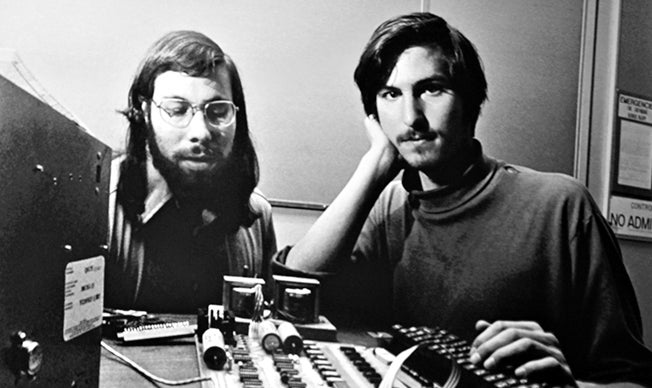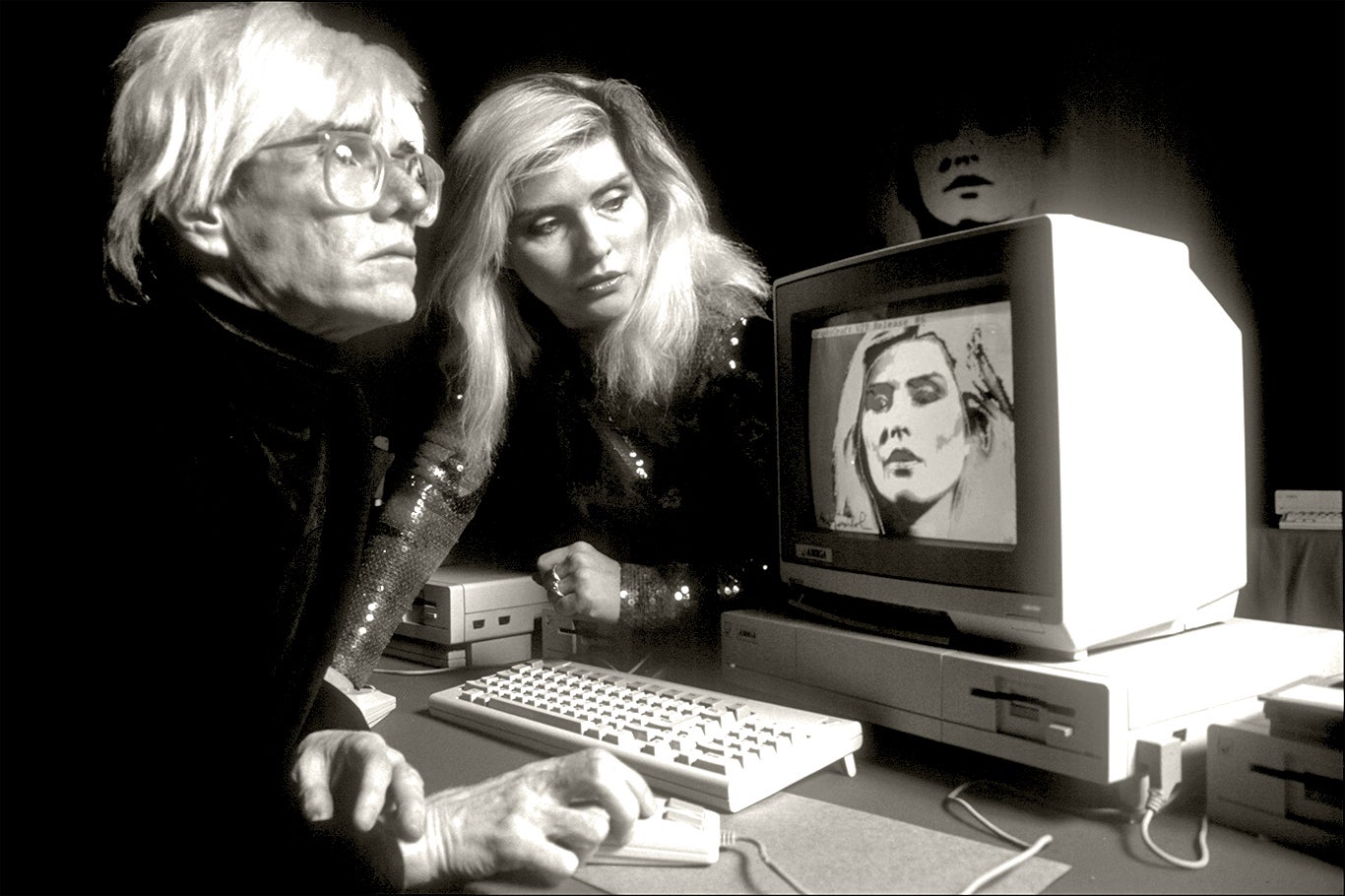When Andy Warhol Met Steve Jobs, 1984
5 MIN READ
Looking back at the moment the worlds of art and tech collided at a child’s birthday party.
Warhol was the former shoe designer who defined pop art from his Factory studio, using his enormous platform to spout ironic, mind-bending commentary on culture. Jobs was the college dropout whose visionary merging of designer aesthetic with home computing changed the world forever.
Both saw art as business, and business as art, bestriding an explosion of late 20th century culture. Though their meeting in 1984 had an air of destiny, it was a surprisingly intimate moment. In fact, we only know of it thanks to the attendance of a writer, David Sheff, who accompanied a 28-year-old Steve Jobs to the 9th birthday party of Sean Lennon – the son of his friend Yoko Ono – at The Dakota Building on Central Park West.

Apple founders Steve Jobs and Steve Wozniak © Getty
Scruffy kid
The party was already in full swing when Andy Warhol and his companion Keith Haring entered the room. The two artists, until this point in their careers elbow-deep in paint, ink and marker, were awestruck by the neat, humming magic box on the floor and by the scruffy “kid”(Jobs) showing it off.
“What is this?” asked Warhol, thunderstruck. “Look at this, Keith. This is incredible!”
Within moments he had joined Jobs and the birthday boy on the floor and was being guided by the former in the finer points of using a mouse.
New tricks
“Warhol didn’t get it,” writes Sheff. “He lifted and waved the mouse, as if it were a conductor’s baton. Jobs gently explained that the mouse worked when it was pushed along a surface. Warhol kept lifting it until Steve placed his hand on Warhol’s and guided it along the floor. Finally, Warhol began drawing, staring at the “pencil” as it drew on the screen.”’
Confronted for the first time by a digital drawing tool, the King of Pop Art took just as much delight in nailing the basics as any person: he looked up wide-eyed and told Haring, “Look! Keith! I drew a circle!”

Andy Warhol making art with Debbie Harry, 1986 © Getty
In his diary for that evening, published after his death in 1987, Warhol wrote:
“I said that once some man had been calling me a lot wanting to give me one, but I’d never called him back or something, and then the kid looked up and said, ‘Yeah, that was me. I’m Steve Jobs.’ And he looked so young like a college guy… Then he gave me a lesson on drawing with it. It only comes in black and white now, but they’ll soon make it in color. …I felt so old and out of it with this whiz guy right there who’d helped invent it.”
Jobs told Warhol the offer of a Macintosh was still open, though it’s unknown if the artist ever took delivery of his freebie. What is certain, however, is that he spent the remaining years of his life immersed in creating digital art. Perhaps moved by this encounter, he also included a painting of Apple’s iconic logo in his 1985 Ads series, helping to cement Jobs’ legacy as a cultural mover.
Sliding doors
For Jobs, the meeting at The Dakota was part of the lifelong association and collaboration he sought with creative thinkers. Warhol (and Haring and Ono) were currents in a flowing creative stream that would nourish Apple’s output, even as far out as his future work with the revolutionary iPhone, iPad and iPod.
In 1996, he said, “We have always been shameless about stealing great ideas and I think part of what made the Macintosh great was that the people working on it were musicians and poets and artists and zoologists and historians.”
For Warhol, the meeting was a watershed moment that would rewire his output in a very personal way.
Each man took something different from that night, a testament to the possibilities of a quiet conversation at a party.
What next to read

Share article